Dajia District
Dajia
大甲區 Taikō | |
|---|---|
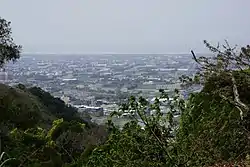 | |
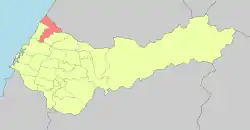 Dajia District in Taichung City | |
| Location | Taichung, Taiwan |
| Area | |
| • Total | 59 km2 (23 sq mi) |
| Population (February 2023) | |
| • Total | 74,904 |
| • Density | 1,300/km2 (3,300/sq mi) |
| Website | www |
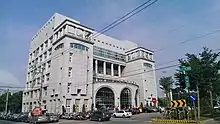
Dajia District (Chinese: 大甲區; pinyin: Dàjiǎ Qū; Pe̍h-ōe-jī: Tāi-kah-khu) is a coastal suburban district in Taichung, Taiwan. It is located on the northwestern corner of Taichung. The climate of the region is Sub-tropical, and the average temperature is roughly 24 degrees Celsius. In March 2012, it was named one of the Top 10 Small Tourist Towns by the Tourism Bureau of Taiwan.[1]
History
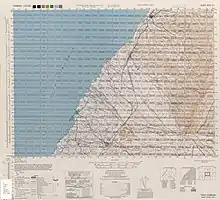
The local Taokas tribe people used to live in the area before the Han people arrived. Their main activities were hunting and farming. The Han Chinese started to arrive around 1669 during the Ming Dynasty in which most of them came from Fujian, especially Quanzhou. Dajia used to be an urban township of Taichung County. On 25 December 2010, it was upgraded to become a district of the new special municipality of Taichung.[2]
Administrative divisions
Zhaoyang, Dajia, Shuntian, Kongmen, Pingan, Zhuangmei, Xinmei, Minshan, Zhongshan, Nanyang, Xunfeng, Yihe, Wuling, Wenqu, Wuqu, Wenwu, Fenghua, Dehua, Jiangnan, Dingdian, Taibai, Mengchun, Xingfu, Rinan, Longquan, Xiqi, Tongan, Fude and Jianxing Village.
Economy
Notable products
- Dajia East Pottery
- Yutou etc.
- Nǎiyóu sū bǐng (奶油酥餅) – A buttery flaky pastry with a thin round shape
- Purple jade su – a taro dessert
Native products
- Rice
- Taro
- Scallion
- Sweet potato
- Bitter melon
- Straw hats and products
Industrial products
- Bicycle-Giant Manufacturing is Established 1972 in Dajia
Tourist attractions
.png.webp)
- Dajia Jenn Lann Temple
- Sword Well
- Chenggong Park
- Dajia Wenchang Temple
- Kuo Xing Temple
- Military Memorial Park
- Zhongzheng Park
Dajia Mazu Sightseeing Cultural Festival, Taichung A religious and pompous event – Dajia Mazu border-tour of incense-offering
In the spring of Taiwan, amidst blossoming natural flowers, every locality is stirred for the event of welcoming and receiving Mazu. Mazu, being long stalled adored in the temple, is being shouldered by worshippers to view the spring for blessing. Everyone with religious sentiment happily participates in the event of the joyful god-welcoming competitions.
Among these events to welcome Mazu, held in every locality, is the border-tour of incense-offering of "Dajia, Taichung Mazu Sightseeing Cultural Festival." The tour would travel across the city and village of the former Taichung County (now part of Taichung City), Changhua County, Yunlin County, and Chiayi County and is considered to be one of the major events of Taiwan's religious community. As a whole, the tour would march a distance on foot of 330 kilometers, and lasts over 7 days and 8 nights, passing by more than eighty participating temples. During the border-tour of incense-offering, both the traditional folk arts as well as new-generation artistic performance of Taiwan join in the tour for joy, attracting a great deal of attention.
As the worshippers travel through the county and city with the faith of Mazu, they build up friendships with people along the way. During the 7-day and 8-night tour of incense-offering, there are joyful and exciting events and religious prayer as well as concentrated and ascetic sentiments – a co-existence of the heavenly and temporary, while artistic performances of the ancient, contemporary, local, or overseas are staged within the same context of space and time. As a result, the intermingled moments of religious faith and an exhilarating joyful atmosphere have confirmed the religious faith of the people of Taiwan.
In recent years, the festival is increasingly attracting the growing number of Mazu worshippers in mainland China – in 2010 there were more than 2,000 mainland followers from about 40 Mazu temples. President Ma Ying-jeou also attended.[3]
Transportation
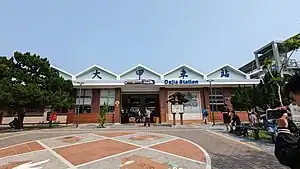
Taiwan High Speed Rail passes through the eastern part of the district, but no station is currently planned.
Notable natives
- Chiu Tai-san, Minister of Justice (2016–2018)
- Hsueh Ling, member of 8th Legislative Yuan
- Liu Sung-pan, Vice President of Legislative Yuan (1990–1991)
- Peng Ming-min, Presidential candidate for 1996 presidential election
- Huang Poren
See also
References
- Wong, Maggie Hiufu (30 March 2012). "Taiwan names its 10 top small tourist towns". CNN Go. Archived from the original on 2 April 2012. Retrieved 31 March 2012.
- "History". Dajia District Office. 6 December 2016. Archived from the original on 7 March 2017. Retrieved 7 March 2017.
- Taiwanese festival lures mainland Chinese Archived 21 April 2010 at the Wayback Machine, BBC News, 19 April 2010